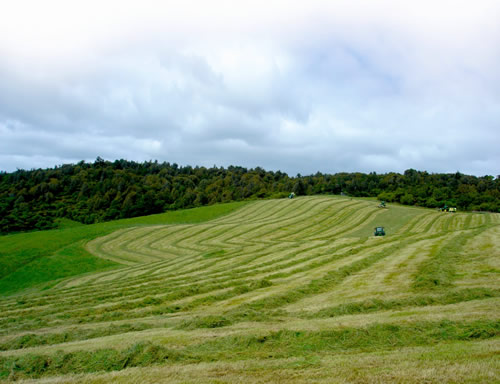
Hay is probably everyone's choice of fodder, but has taken a back seat these days as it is often the most difficult to harvest satisfactorily. Now, with plastic prices continuing to surge upwards, haymaking could make a strong comeback suggests Graham Robson, Technical Manager of UAT, the crop packaging specialists.
"We all know that there is 'Hay' and there is 'Bad Hay', with no in-between," says Mr Robson. "However, with the additives now available, it is possible to bale hay with moisture content from 16% up to 30%. So you can bale hay on those days when the sun just doesn't come out, or start a few hours early and bale longer after the sun has disappeared, to make the most of haying weather."
"The quality of the baling job will have a big effect on the preservative qualities of the valuable forage. A fully-covered bale gives more protection than one would imagine - hay bales can be stored outside from one summer to the next and still be used."
It is important to understand and appreciate what is meant by 'fully covered'. John Deere and Tama Plastic Industry developed the CoverEdge system, which produces the best-covered round bale possible with the net going to the edge of the bale and then – this is the key part - over the edge. The top surface of the bale is given a great roof and then the the bottom edges of the bale are pulled in, to lift any crop off the ground and reduce any chance of moisture wicking into the bale.
CoverEdge netwrap was originally produced specifically for the John Deere CoverEdge baler, but can be used in other balers capable of accepting the slightly wider CoverEdge roll. So, while not every baler can accept it, CoverEdge netwrap can be used in most makes of round baler and achieve a similar result .
"The genius is not only its edge-to-edge technology - it is the elasticated edge thread which has the ability to act as a drawstring to pull the net tight to the edge of the bale after spreading down its side by up to 4 inches," adds Mr Robson. "Clearly, where valuable dry crop is concerned, this could help tip the balance in whether to make hay this summer or not."
